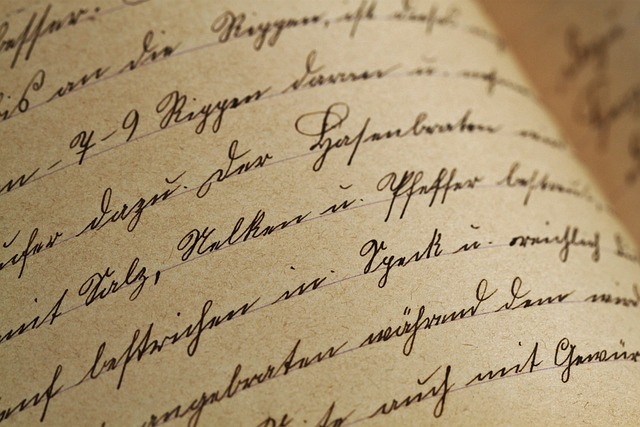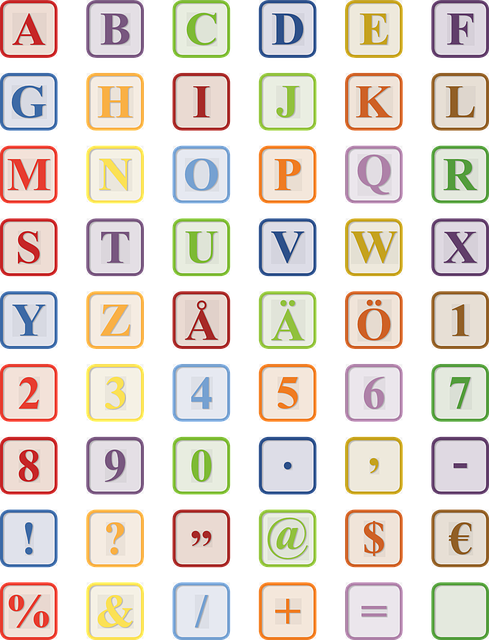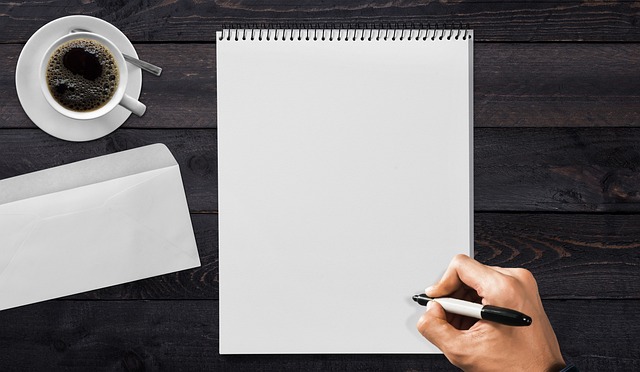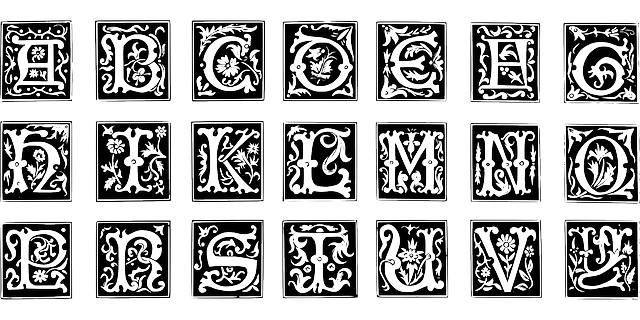Are you tired of your handwriting looking messy and illegible? If so, you’ve come to the right place! In this article, we’ll dive into the artistic realm of handwriting and specifically focus on mastering the letter ‘M’ in block letters. With a natural and conversational tone, we’ll explore the step-by-step process to achieve clean and attractive block letter ‘M’s. So, get ready to sharpen your pencil and join us on this handwriting adventure!
Contents
- Understanding the Basics of Block Lettering
- Mastering the Fundamentals: Start with the Correct Hand Posture
- Tips for Consistency: Creating Uniform Blocks in Your Handwriting
- Adding Personal Style: Exploring Variations in Block Lettering
- Enhancing Legibility: Techniques for Clear and Neat Block Letters
- Troubleshooting Common Issues: Overcoming Challenges in Writing Block “M”
- Developing Speed and Confidence: Practicing Block Lettering for Efficiency
- Refining Your Technique: Expert Tips to Perfect Your Block Letter “M
- ” in English
- Frequently Asked Questions
- Concluding Remarks
Understanding the Basics of Block Lettering
Block lettering is a popular form of typography that is characterized by its clean and bold appearance. This type of lettering is commonly used in various contexts, such as sign-making, graphic design, and even handwriting. can help you create eye-catching designs and make your handwriting more legible.
One of the key features of block lettering is its uniformity in shape and size. Each letter is formed by combining straight lines and curved lines at right angles, resulting in a crisp and geometric look. To create block letters, start by outlining the shape of each letter using straight lines. Then, fill in the outline with solid colors or patterns to enhance its visual impact. Remember to keep the proportion of each letter consistent, paying attention to the space between letters and lines. This will ensure that your block lettering looks balanced and cohesive.
When practicing block lettering, it’s important to experiment with different styles and variations. You can create block letters with rounded edges for a softer look or play with different line weights to add depth and dimension. Additionally, consider using different colors and shading techniques to make your block lettering pop even more. Don’t be afraid to get creative and try out different combinations to give your designs a unique and personal touch. With practice and experimentation, you’ll soon master the basics of block lettering and be able to use it confidently in various creative projects.
Mastering the Fundamentals: Start with the Correct Hand Posture
When it comes to playing any musical instrument, having the correct hand posture is essential in achieving optimal performance and preventing injuries. Whether you’re a beginner or a seasoned musician, it’s important to start by mastering the fundamentals, and that means paying close attention to your hand position. Here are some tips to help you get started:
1. Position your fingers: Place your fingers gently on the instrument, with your fingertips touching the keys, strings, or frets. Avoid pressing too hard, as it can lead to unnecessary tension and fatigue.
2. Maintain a relaxed grip: Avoid gripping the instrument too tightly. Instead, aim for a relaxed grip that allows your fingers to move freely. This will not only improve your dexterity but also reduce the risk of strain or injury.
3. Keep your wrists straight: Make sure your wrists are in a neutral, straight position. Avoid excessive bending or twisting, as it can cause discomfort and limit your range of motion.
4. Pay attention to your thumb: The thumb plays a crucial role in hand posture. For most instruments, it should be positioned comfortably opposite your fingers, acting as a support without applying any unnecessary pressure.
To truly master your instrument, it’s crucial to give proper attention to your hand posture from the very beginning. By following these tips and maintaining a correct hand position, you will not only enhance your playing technique but also prevent any potential discomfort or injury down the road. Remember, a strong foundation in hand posture sets the stage for more advanced skills and musical expressions!
Tips for Consistency: Creating Uniform Blocks in Your Handwriting
Do you often find that your handwriting lacks a uniform appearance? Creating uniform blocks in your handwriting can enhance its legibility and overall appeal. Here are some tips to help you achieve consistency and make your handwriting stand out:
- Use guidelines: Consider using guidelines to maintain consistent letter and word height. These can be done by drawing horizontal lines on your paper, creating a visual framework for your writing.
- Practice spacing: Pay attention to the spacing between each letter and word. Consistent spacing helps keep your handwriting neat and organized. Consider using a ruler to guide your spacing and ensure even gaps between the letters and words.
- Adopt a uniform slant: Decide on a slant angle and stick to it throughout your writing. This helps maintain consistency and gives your handwriting a more polished look. Use a slant guide or consider using lined paper to help you achieve this.
To further improve the uniformity of your handwriting, try the following techniques:
- Develop muscle memory: Consistency comes with practice, especially muscle memory. Engage in regular writing exercises to train your hand muscles. Start with basic strokes and progress to more complex letters and words to develop muscle memory for uniformity.
- Take your time: Rushing through writing can lead to sloppy and inconsistent handwriting. Take your time and focus on each stroke, paying attention to maintaining the same level of pressure and angle for each letter.
- Experiment with different writing tools: Different writing tools may affect how your handwriting looks. Try different pens, pencils or even a fountain pen to see which tool helps you achieve uniform blocks more easily.
By implementing these tips, your handwriting will become more consistent, legible, and visually appealing. Consistency takes time and practice, so be patient with yourself and enjoy the process of improving your handwriting skills!
Adding Personal Style: Exploring Variations in Block Lettering
Block lettering is a popular form of typography that can be seen in various design projects, from logos to posters. While it may seem straightforward at first, adding your personal style to block lettering can truly make your design stand out. There are numerous variations and techniques that you can explore to make your block lettering unique and memorable.
One way to add your personal touch to block lettering is by experimenting with different font styles. Don’t be afraid to use unconventional fonts or create your own custom ones. By choosing fonts with different weights, styles, and even slanting them, you can instantly transform your block lettering into something truly one-of-a-kind. Additionally, you can also mix and match different fonts to create interesting combinations with contrasting styles. This can add depth and visual interest to your block lettering, making it visually appealing to the viewer.
Another way to explore variations in block lettering is by incorporating different decorative elements or embellishments. Consider adding shadows or highlights to give your lettering a three-dimensional appearance. You can also experiment with adding texture to each letter, creating a visually appealing tactile effect. Additionally, playing with size variations, such as having certain letters larger or smaller than others, can create a dynamic and visually pleasing composition. Finally, don’t forget about color! Choosing vibrant or contrasting color schemes can further enhance your block lettering and make it pop off the page.
Enhancing Legibility: Techniques for Clear and Neat Block Letters
When it comes to block lettering, achieving clear and neat results can make all the difference. Whether you’re working on a school project, creating a sign, or simply enhancing your handwriting, there are several techniques you can employ to make your block letters stand out. Here are some tips to help you improve legibility and create beautifully structured block letters:
- Consistency is key: Aim for consistent letter size, spacing, and thickness to ensure a uniform appearance. This will make your writing more readable and cohesive.
- Use guidelines: Consider using faint pencil guidelines or lined paper to help you maintain consistent letter heights and proportions. These guides can act as a visual reference, making it easier to create balanced and even block letters.
- Focus on straight lines: One of the defining features of block letters is their straight edges. Pay close attention to horizontal, vertical, and diagonal lines to ensure they are crisp and well-defined.
Emphasize spacing: Proper spacing between letters is crucial for legibility. Avoid overcrowding your letters and aim for equal gaps between each character. This will prevent your block letters from running together and enhance their overall clarity.
Troubleshooting Common Issues: Overcoming Challenges in Writing Block “M”
When it comes to writing, facing challenges and experiencing writer’s block is a common occurrence. One particular type of writing block that many individuals encounter is known as “Block M.” Overcoming this hurdle is crucial for writers to regain their creative flow and productivity. Here are some practical strategies to help you navigate and overcome the challenges associated with writing block “M”:
1. Embrace mind mapping:
Allow your thoughts and ideas to flow freely by utilizing mind mapping techniques. Start by placing the main concept or theme of your writing project in the center of a blank page. Branch out with related subtopics and ideas, connecting each one to the central theme. Mind maps enable you to visualize the connections between different elements and can often spark new inspiration.
2. Seek inspiration from diverse sources:
Expose yourself to various sources of inspiration, such as literature, music, art, or even nature. Explore different genres, styles, and perspectives to broaden your creative horizons. Engage in activities that stimulate your imagination, like visiting museums, attending literary events, or taking long walks in nature. By immersing yourself in diverse experiences, you may find fresh ideas and concepts to break free from writing block “M”.
Developing Speed and Confidence: Practicing Block Lettering for Efficiency
Mastering Block Lettering for Speed and Confidence
When it comes to lettering, efficiency plays a crucial role. In the fast-paced world we live in, being able to write with speed and confidence can greatly enhance productivity and creativity. One effective way to develop these skills is by practicing block lettering. Not only does it provide a neat and organized appearance, but it also allows you to convey your message clearly and quickly. Whether you are a beginner or an aspiring calligrapher, here are some tips to help you master block lettering for improved efficiency:
- Consistency is key: To achieve clean-looking block letters, it’s important to maintain consistent proportions and spacing. This helps create balance and harmony throughout your lettering.
- Start with a draft: Before diving into the final piece, it’s always a good idea to sketch out your letterforms using a light pencil. This preliminary step allows you to make necessary adjustments and corrections, ensuring a more accurate outcome.
- Practice lettering drills: Regular practice is essential for developing speed and confidence in block lettering. Set aside dedicated time to focus on specific letterforms, repeating them in various sizes and styles. This repetition improves muscle memory and enables you to write with greater fluency.
By incorporating these techniques into your block lettering practice, you’ll be on your way to becoming a more efficient and skilled letterer. Remember, the key to mastery is gradual progress and dedication. With every stroke, you’ll witness your speed and confidence soar, allowing you to effectively communicate ideas with clarity and style.
Refining Your Technique: Expert Tips to Perfect Your Block Letter “M
” in English
When it comes to block lettering in English, the letter “M” can be a bit tricky to master. With its unique shape and angles, it requires precision and attention to detail. But fear not! With these expert tips, you’ll be able to refine your technique and create flawless block letter “M”s every time.
1. Mind the proportions: Start by drawing two vertical lines that are evenly spaced apart. These lines will be the outer edges of your “M.” Then, draw a horizontal line that connects the tops of the vertical lines. This line should be shorter than the vertical lines to maintain the characteristic shape of the letter.
2. Perfect the angles: Begin at the top of the left vertical line and draw a diagonal line that slants towards the center. Repeat this on the right side as well. These diagonal lines should meet in the center, forming a “V” shape with the horizontal line. Ensure that the angles are symmetrical on both sides for a polished look.
3. Connect the lines: Now it’s time to connect the diagonal lines with the vertical ones. Draw short horizontal lines that connect the ends of the diagonal lines to the vertical lines. These lines should be parallel to the top and bottom horizontal lines, giving your “M” a solid and uniform appearance.
4. Refine the details: Take a step back and evaluate your block letter “M.” Make necessary adjustments to ensure the lines are straight, angles are sharp, and proportions are consistent. Pay attention to areas where lines intersect and ensure they are clean and smooth for a professional finish.
Remember, practice makes perfect! Take your time and experiment with different techniques to find what works best for you. With dedication and these expert tips, you’ll soon be a master at creating impeccable block letter “M”s in English.
Frequently Asked Questions
Q: How can I improve my handwriting for writing the letter M in block letters?
A: Improving your handwriting requires practice and proper technique. Here are a few tips to help you write the letter M in block letters more effectively.
Q: What is the correct way to start writing the letter M?
A: To begin writing the letter M, you should start at the top left corner. Draw a slightly slanted vertical line downwards.
Q: What comes after the vertical line when writing the letter M?
A: After drawing the vertical line, move diagonally towards the right. Start from the bottom of the vertical line and end at the same height as the starting point.
Q: How do I complete the letter M?
A: From the endpoint of the diagonal line, draw a second diagonal line, this time moving towards the left. Again, start from the bottom and end at the same height as the starting point. This will form an inverse diagonal line to complete the letter M.
Q: Should the second diagonal line of the letter M touch the first diagonal line?
A: No, the second diagonal line of the letter M should not touch the first diagonal line. Leave a small space between the two diagonal lines to maintain the block letter structure.
Q: Can you suggest any exercises to practice writing the letter M in block letters?
A: Yes, there are several exercises that can help you practice writing the letter M. You can use lined or graph paper to practice drawing each line of the M individually before attempting to write the entire letter. Repeat the exercise multiple times to develop muscle memory and improve accuracy.
Q: Are there any common mistakes to avoid when writing the letter M in block letters?
A: Yes, there are a few common mistakes to avoid. One is not starting the letter M at the top left corner, as mentioned earlier. Also, make sure the diagonal lines are of equal length and slant in opposite directions. Finally, don’t forget to leave a small space between the diagonal lines.
Q: How can I maintain consistency in the size and shape of the letter M?
A: Consistency in size and shape can be achieved through practicing the letter M regularly. Pay attention to the proportion of each line and the slant of the diagonals to ensure a uniform appearance. Consistency will improve as you become more comfortable with the letter’s formation.
Q: Is it necessary to write the letter M in block letters all the time?
A: No, it’s not necessary to write the letter M in block letters all the time. Block letters are often used for titles or headings to give them a bold, clean look. In regular writing, you can use either cursive or print form according to your preference.
Q: Any final tips for mastering the art of writing the letter M in block letters?
A: Practice regularly and be patient with yourself. Remember, the more you practice, the better your handwriting will become. Don’t be afraid to experiment with different styles and find what works best for you. With determination and perseverance, you’ll be able to master the art of writing the letter M in block letters.
Concluding Remarks
In conclusion, mastering the art of writing the letter M in block letters requires practice and attention to detail. With time, anyone can achieve beautiful and legible handwriting. So grab a pen and start perfecting your M!









